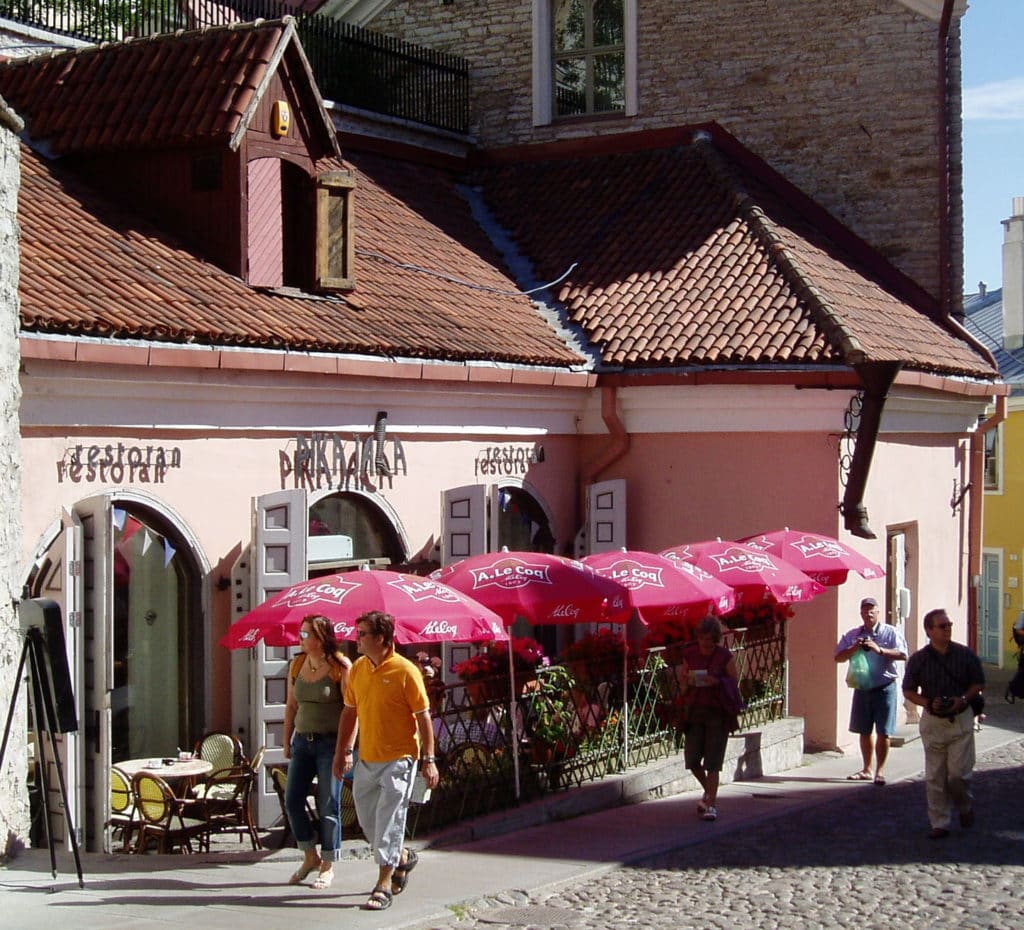Destination Stewardship Report – Spring 2023 (Volume 3, Issue 3)
This post is from the Destination Stewardship Report (Spring 2023, Volume 3, Issue 3), a publication that provides practical information and insights useful to anyone whose work or interests involve improving destination stewardship in a post-pandemic world.

Delegates fill the FIBES Conference and Exhibition Centre in Seville, eager to learn and collaborate at the largest GSTC conference to date.
Highlighting Destination Stewardship in Seville: Collaboration, Standards, and Good Policy
Good destination stewardship planning requires more than good intentions. It requires genuine and diverse community collaboration, setting and following rigorous standards, and good public policy that enables action. Tiffany Chan, Destinations Program Coordinator at the Global Sustainable Tourism Council (GSTC), describes the key themes and main takeaways from the 2022 Global Sustainable Tourism Conference.
Sustainability is only effective if it is a collaborative process
After a two-year hiatus during the pandemic, the Global Sustainable Tourism Council’s (GSTC) 2022 Global Sustainable Tourism Conference resumed in person on December 12th-15th in Seville, Andalusia, Spain at FIBES Sevilla, the city’s Exhibition and Conference Centre. With 350 delegates from 61 countries and hundreds of viewers joining the livestreams, it was the largest GSTC conference yet.
Destination stewardship was one of the main themes, in addition to tourism adaption to climate change, mainstreaming sustainability standards, green mobility and accessibility. Below are the key takeaways from three particular sessions:
- Destination Stewardship Councils
- National Tourism Programs Using Existing Sustainable Tourism Standards
- NTOs Engaging and Promoting Certification of Businesses.
Destination Stewardship Council Approaches

Tree planting in the Azores during the 2019 post-conference tour to offset the carbon footprint.
The relationship between tourism and a destination is complex and requires a collaborative approach. In the Azores, the perception of stakeholders varies from island to island, as do local problems. Carolina Mendonça stresses the importance of stakeholder engagement to ensure they are part of the process. Azores DMO created an action plan based on the commitment of relevant stakeholders, identifying successful actions, and reviewing the process of unsuccessful actions. Nine green teams, public working groups, and local organizations were involved to ensure active participation of the entire community.
“You need to have people who are committed to reaching the goal. It is not possible to start the process without it,” states Stefano Ravelli from DMO Valsugana. Valsugana’s approach to cooperative engagement emphasizes the importance of communicating values, talking to tourists, and investing in residents – the ambassadors of the destination. In doing so, they developed a kit for operators to effectively communicate what sustainability means. “You don’t have to convince anybody. It’s just a matter of explaining the journey.”
A similar approach is also seen in another Italian town nearby. Through Eggental Tourismus’ certification process, Stephanie Völser quickly learned that sustainability is the main thread and overarching theme of the destination’s strategy. A participatory process – such as engaging partners, stakeholders, and municipalities – before the certification process allowed for general consensus and understanding of important sustainability matters. Eggental also organized working groups with a variety of members, which provided meaningful engagement with stakeholders from the community.
In the mountain town of Park City, Utah, extreme periods of visitation during high season put a strain on the community. “The community of Park City is afraid it will lose itself to the destination of Park City,” quoted Morgan Mingle. A situation assessment on resident sentiment was conducted as part of the destination’s planning process. Community buy-in ensures that local residents and stakeholders are aware of the scope and that sustainability is not just about the environment. In the formation of a destination stewardship council, Park City tried to bring in as many diverse perspectives and conflicting interests as possible to ensure that all voices are heard and approaches are agreed upon. This process helped to understand stakeholders’ needs.
Putting people first is a key design for the sustainable management of a destination. Starting with the “why” allows everyone to understand the common goal. Certification is not necessarily the end goal, but an ongoing process. A long-term multi-year strategy is required for continuous improvement. As a result, holistic management that includes citizen participation can enrich communities and provide the means to preserve natural environments and cultural heritage with many benefits to local residents.
Using Existing Sustainable Tourism Standards is Beneficial for National Tourism Programs
National sustainable tourism certification programmes add credibility and promotion, but why are there so many different approaches? Some destinations develop their own programmes from scratch, which can be time-consuming and costly, while others use the framework and criteria from existing standards to build their own national certification system. Some base their program on a range of international certifications, while others opt to work with the one scheme that best suits their needs.
The European Travel Commission, representing 32 national tourism organizations in Europe, published a handbook last year emphasizing the importance of a national approach towards planning, developing and implementing sustainability in tourism through certification. International certifications can be white-labelled and tailored to the needs of any destination. According to the handbook, it is easier to adapt or adopt an existing standard or a scheme than create a whole new one. It specifically recommends the GSTC framework.
Thus, designing a sustainable tourism program to achieve national goals is a varied process. Four national schemes were examined at GSTC2022: Visit Estonia Sustainability Plan, Sustainable Travel Finland, Green Scheme of Slovenian Tourism, and Switzerland Tourism’s Swisstainable Strategy.
According to Liisa Kokkarinen, Head of Sustainable Development at Visit Finland, the first step is difficult but the most crucial. Visit Finland struggled to find an existing program that directly served both destinations and businesses when they started this process. They wanted the entire industry to be on the same journey. The Sustainable Travel Finland program is built on the GSTC Criteria. It is regarded as a pathway to ensure tourism businesses and destinations start by committing as the first of seven steps.
Slovenia Green took on the existing Green Destination standard in Slovenia and adapted it to the Slovenian model and brand. The Green Destinations standard is internationally recognised, which was an important factor for Slovenia Green when choosing a standard to white label. Slovenia Green is not only a certification program but an important tool on a national level that is recognized by the ministry. It started as a manual for hotels and developed into a certification program six years later in 2015. “The main aim of our sustainable Slovenia Green program is that it provides evaluation and improvement to more responsible tourism management and I think this is one of the main advantages that a national program can bring to the destination. It is our job as a national tourism organization to really give the tools and information to businesses and smaller destinations who might not have the time or resources.” Slovenia Green is owned and managed by the Slovenian Tourist Board, working alongside accredited partner Good Place and international partner Green Destinations.

Tourists stroll a street in historic Tallinn, Estonia, now in the early stages of a national green program. [Photo by Jonathan Tourtellot]
Estonia is in the early stages of developing its national program. They first started by surveying which methods countries are using and realized that for a small country, it didn’t make sense to build a certification program from scratch. They decided to instead adopt an existing certification program. Visit Estonia participated in the Green Destination program in 2020 by piloting 7 destinations. After a successful pilot phase, the Estonian sustainability scheme is on the trajectory of becoming its own national-level green program. Liina Maria Lepik, Head of International Services at the Estonian Tourist Board also agrees that the first step in creating awareness and commitment from tourism companies and destinations is the hardest, but most crucial. It is a learning-by-doing process, so sharing success stories and knowledge within countries, but also with other countries that are on a similar journey is important.
On the other hand, the Swissstainable program is neither a label nor a new certification scheme, but is referred to as a holistic approach that builds on existing certification to provide guidance and orientation for guests. “Recognizing existing forms of credentials allows us to consider many positive developments without having to establish a time-consuming control system,” explained Helena Videtic, Sustainability Manager, at Switzerland Tourism. The Swisstainable program focuses on organizations and businesses.
When asked about the key factors for success when starting a national program, the four destinations offered the following advice:
- Ensuring that you have a clear structure to see the path that you are taking, with easy first steps and small success stories to help build momentum and motivation to get to the final stage.
- Understanding the needs and obstacles of key stakeholders and partners.
- Recognizing that when it comes to sustainability, many businesses and destinations often don’t have the capacity or knowledge, or don’t know where to start. This can be overwhelming.
- Having a simple, ready-to-use, and easy-to-understand program is also key when providing tools and knowledge as a national tourism authority.
Destination sustainability requires good public policy that informs private-sector practices
Criterion A4 of the GSTC Destination Criteria states that the destination should regularly inform tourism-related enterprises about sustainability issues and provide guidance with the implementation of sustainability practices. As such, DMOs must take an active role in engaging with the private sector to encourage more sustainable forms of services and experiences.
Realizing sustainability goals in Singapore as a nation is guided by the Singapore Green Plan 2030. Singapore has engaged with over 27,000 stakeholders, working with private and public partners to take action, share expertise, and co-create sustainability solutions. Certification is a key part of Singapore Tourism Board’s strategy, strongly encouraging tourism stakeholders to obtain internationally recognized certification in accordance with the GSTC Criteria. However, as Cherie Lee, Chief Sustainability Officer of the Singapore Tourism Board, mentions, “Certification is not the end all be all. It is a learning journey to see how to continue to improve and strengthen sustainability performance.” Tourism enterprises that want to become certified can receive financial support from STB, as well as training opportunities and participation in an accelerator program working to develop innovative sustainable solutions.
Norway’s sustainable destination program started with four small destinations and now 28 destinations are approved to be part of the main process. This is in addition to 30 more destinations already in the early stages. “Most who aren’t involved are calling and want to be involved in the sustainable destination program,” said Knut Perander, Head of Tourism Development at Innovation Norway. Innovation Norway measures DMOs on the certification rate of businesses in the destination. All private companies that apply for funding with Innovation Norway have to answer to the 5 areas: Value creation, Ripple effects, Guest satisfaction for priority target groups, Attractive local communities and happy residents, and Climate footprint.
The Mauritius Tourism Authority is committed to sponsoring 60 tourism small- and medium-sixes enterprises (SMEs) to achieve certification with the financial support of other partners. Almost 90% of tour operators in Mauritius are SMEs. The Mauritius Innovation Framework, developed by the Sustainable Island Mauritius (SIM) project, was inspired by the GSTC Criteria, as well as the local standard MS 165 2019, also known as Blue Oasis Certification “Strong adherence to the GSTC Criteria is the only path to achieving ambitions at the local and international level,” explained Lindsay Morvan, Director of the Mauritius Tourism Authority. Mauritius is also in the process of becoming a GSTC Accredited Certification Body, the first government body to apply for GSTC Accreditation.
Botswana was one of the early adopters of the GSTC Destination Assessment. According to Mafila Richard Malesu, Environment & Eco-Certification Manager of Botswana Tourism Organisation, it was an eye-opening experience. “I put emphasis on Destination Criteria because it is more than just dealing with an individual operator; you are looking at the whole destination and seeing how united are we and how are we in achieving our goals.” He also stressed the importance of involving the private sector and stakeholders in certification. The collaboration of private and public sectors can create a good model to ensure that conservation efforts are in place and tourism companies are profitable.

Elephants draw photographer attention in Chobe, Botswana, which stresses sustainable destination criteria, essential for tourism. [Photo by Jonathan Tourtellot]
Upcoming Destination Stewardship Sessions at GSTC2023
At the closing ceremony, three GSTC Conferences were announced: GSTC2023 Antalya (May 2023), GSTC2024 Sweden (April 2024), and GSTC2024 Singapore (November 2024).
Destination Stewardship will be one of the four main themes at GSTC2023 in Antalya, Türkiye, focusing on Port Destinations, Coastal Destinations, and Rural Tourism.
Recordings of the conference’s sessions can be found on the GSTC YouTube channel.




